Words and Photographs Copyright Scott Bourne
Lots of people think mountains, ferry rides, and water when you mention Washington State, but there are two very distinctive sides to Washington. West of the Cascade Mountain Range, it is indeed lush and green, and its (often wet) terrain features mountains and ocean access along with many streams, old-growth forest and lakes. But on the eastern side of the state, the climate is much drier and there’s an abundance of farmland and even desert.
Seated deep within the heart of eastern Washington is an area broadly referred to as the “Palouse.” While there’s a town called Palouse, Washington, there’s much more to the area than one small town.
Traditionally, the Palouse is defined as the fertile hills and prairies north of the Snake River, which separate it from Walla Walla County, and north of the Clearwater River, which separate it from the Camas Prairie, extending north along the Washington and Idaho border, south of Spokane, centered on the Palouse River. The 3,000 square mile area is home to wheat and legume farmers and a host of other agriculture-related businesses.
I spend time there nearly every year looking for Swainson’s Hawk (Buteo swainsoni) and Short-eared Owl (Asio flammeus) to photograph, but it’s impossible to ignore the beautiful landscape opportunities that abound. Everything from covered bridges to old barns and a patchwork of farmland that looks more like a painting than agriculture await the photographer with an eye for something a little different.
What’s particularly interesting about the Palouse is that the subject of many compelling landscape photographs starts with the geometry of the freshly planted (or plowed, depending on the season) fields that create colorful patterns that seem to roll and rotate like a wave caught in a monsoon.
The rolling hills and the patterns created by the farmer’s machines are mesmerizing. If you can gain elevation and shoot down on these patterns there are almost limitless compositions to be had.
And that leads me to my favorite location in the Palouse: Steptoe Butte. The 3,612-foot-tall butte contains some of the oldest rock in the Pacific Northwest, and it marks the border of the original North American Continent. It also offers a 360° panoramic view of the area.
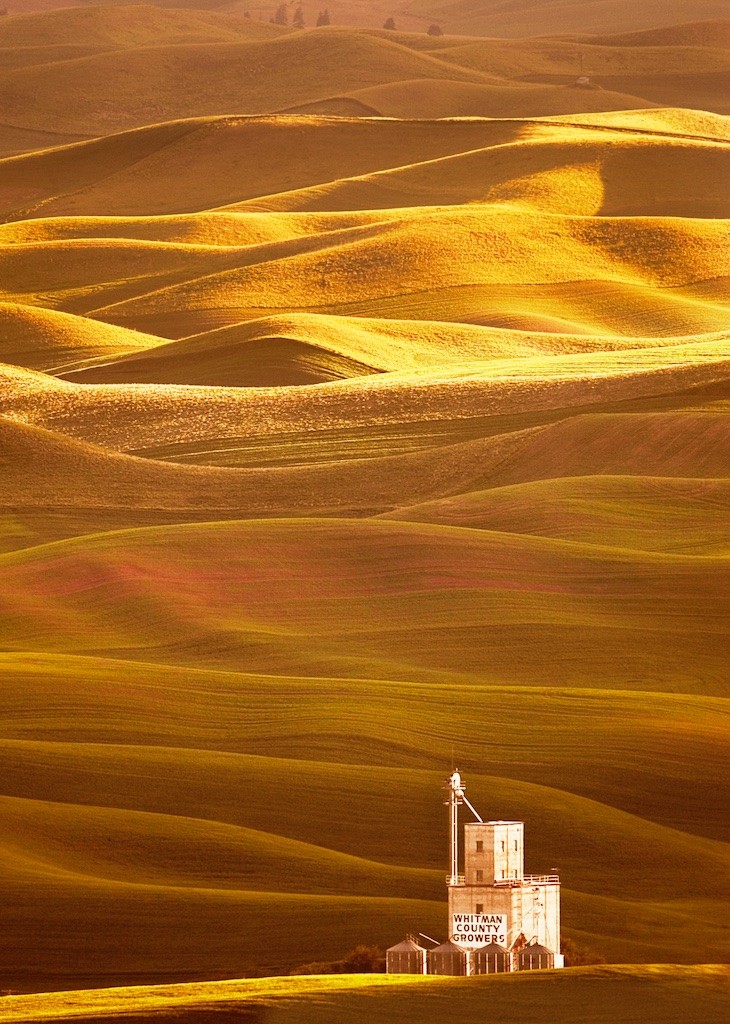
You can drive all the way to the top of the butte and park there but there are also many pullouts on the drive up that offer enough elevation to give you the angles you need to make compelling images. If you do drive to the top, make sure to plan for wind. It can be stiff up there.
Also, as you pick your angles, remember to look at the direction of the light. When shooting landscapes, side lighting is your friend. It brings out texture and richness in a landscape image that you just won’t find anywhere else. If you shoot this area front-lit, you’ll miss most of the deep, rich, texture the fields have to offer.

My second favorite place in the Palouse is Palouse Falls. It’s a year-round waterfall that can be successfully photographed from the parking lot, or more intimately if you’re willing to do some hiking to get a better vantage point.
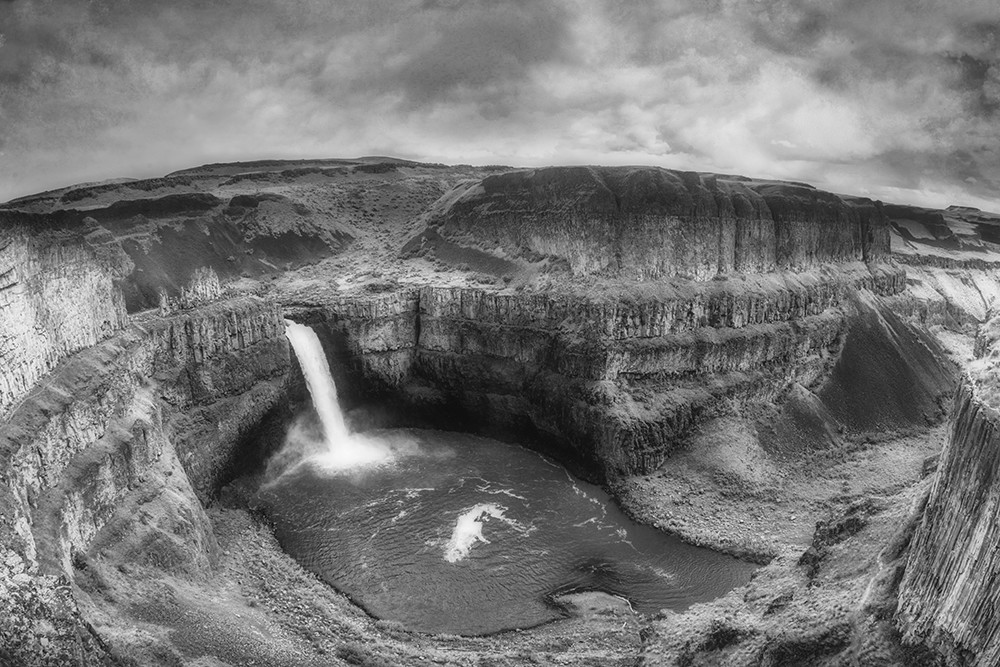
Palouse Falls is 92 miles west of Pullman. It’s a delightfully cool display of water amongst the arid prairie. The Palouse River charges over the rocky precipice and plummets 198 feet to the waiting, round salt-rock canyon. The spray and sun create what seems to be an everlasting rainbow.
Palouse Falls is one of those rare places that you don’t have to go to at sunrise or sunset to get the best light. If you go around sunrise/sunset, the canyon walls will cast a deep shadow across the falls. That’s why I suggest midmorning or even better, mid-to-late afternoon. The sun hits the falls just right then. If you have a day that offers high, thin, clouds, you can shoot here all day.

Conclusion
The Palouse used to be the place nobody had ever heard of. Now lots of photo workshop companies visit twice a year. If you go, please be sensitive to the fact that real people live and work in this area. Respect no trespassing signs, don’t block driveways, and be kind. If you ask for permission from the good people of the Palouse to photograph on their land, more often than not they will grant it as long as you are polite and respectful.
Without a doubt, if you go, you’ll spend more time driving here than if you had simply gone to a national park or similar destination where everything you want to photograph is self-contained. In the Palouse you’ll be spending time on back roads, looking for cool barns and other structures to shoot. If you’re not able to trek around, at the very least plan on seeing both Steptoe Butte and Palouse Falls and you’ll capture the essence of the Palouse, and most likely you’ll want to come back again and again to see what additional surprises this beautiful piece of Americana landscape has to offer.
Where To Go:
Take Hume Road off Hwy 23 to Park entrance and drive to the top
Requires a fee
La Crosse, WA 99143
Requires a fee
When To Go:
April—June for green wheat fields
August—September for the wheat harvest
The best time of the day to visit Steptoe Butte is early morning or early evening when the sun is low near the horizon. The best time for the falls is mid-afternoon.
Where To Stay:
Most photographers visiting the area will base their trip in either Colfax or Pullman. In Colfax, I like to stay at the Best Western Wheatland Inn: 701 N Main St, Colfax, WA 99111; (509) 397-0397
In Pullman, I prefer the Holiday Inn Express: 1190 SE Bishop Blvd, Pullman, 99163; (509) 334-4437
One note about Colfax: It’s known for its aggressive enforcement of traffic laws. The old joke here goes something like this: Colfax has a population of 100 and 101 of them are state troopers. Obey every speed limit sign you see in this town—really.
Stuff To Bring:
If you’re photographing around sunrise or sunset, I highly recommend a tripod since you’re going to have longer exposures. If you don’t want to shoot for HDR, then I suggest graduated ND filters since there will always be the possibility of very bright values in the snowcapped peaks that never leave the mountaintop. A polarizer can also be invaluable here.
At least one camera body with interchangeable lenses. I suggest wide angle (anywhere from 20–35mm) and a medium telephoto zoom such as a 70–200mm. I also like to bring a super telephoto to the Palouse because the narrower field of view these lenses offer allow for isolation of the various geometric patterns found in the wheat fields.
Wear sturdy shoes if you plan to go beyond the paved areas. A sun hat is a good idea. Typically, it’s hot in the summer and warm to hot in the spring, so dress accordingly. If you’re going up on Steptoe in the morning, bring a jacket, hat and light gloves since it can get cold up there.
More Information:
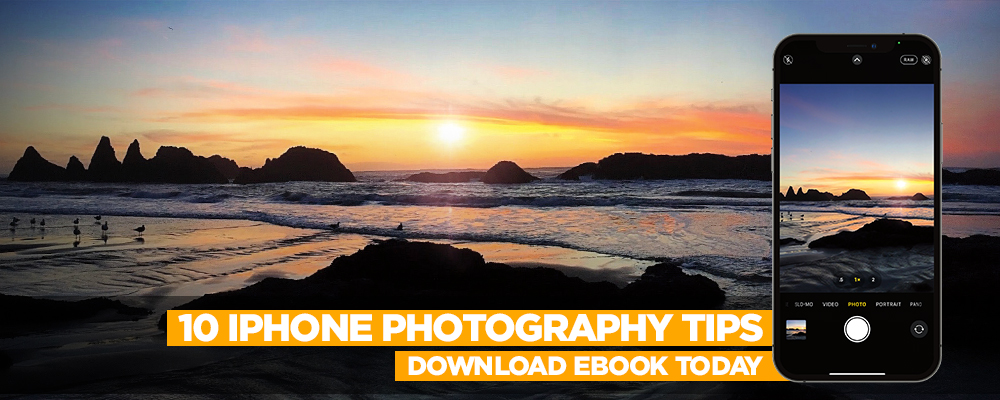

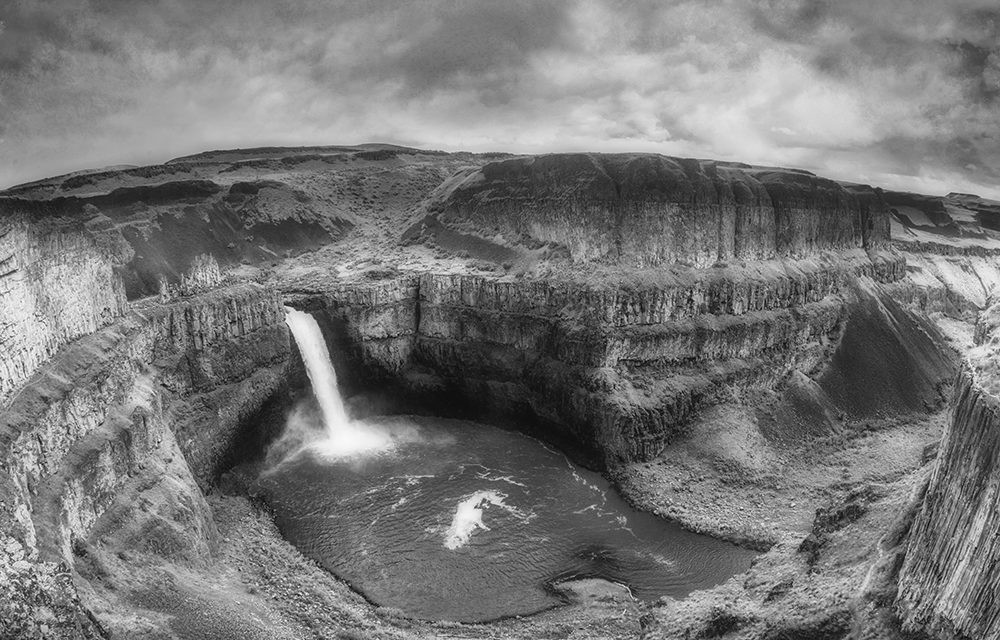



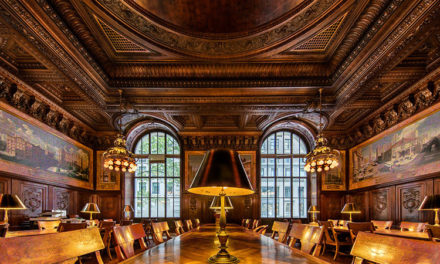

wow very amazing photos Scott! thanks for sharing